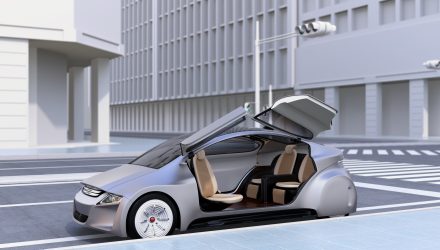By Daniela Rus, PhD, Director of MIT’s Computer Science and Artificial Intelligence Laboratory (CSAIL)
Autonomous vehicles—or AVs—have not had an easy ride. Few doubt the extraordinary potential of self-driving vehicles. As Lawrence D. Burns, GM’s past tech exec and consultant on Google’s driverless cars, states in his just-released Autonomy: The Quest to Build the Driverless Car, self-driving cars “will transform the way we live, the way we get around, and the way we do business.” How do we get there? By increasing the level of autonomy self-driving vehicles can achieve. That’s precisely what we’re working to do at MIT’s Computer Science and Artificial Intelligence Laboratory (CSAIL).
Today, a car crash occurs every 5 seconds in the United States.[1] Globally, road traffic injuries are the eighth leading cause of death, with about 1.24 million lives lost every year.[2] In addition to this terrible human cost, these crashes take an enormous economic toll. The National Highway Traffic Safety Administration has calculated the economic cost in the United States at about $277B a year.[3] Putting a dent in these numbers is an enormous challenge, and self-driving vehicles seem to be the only real solution.
The good news is that technology is being developed today that will give cars the ability to learn how to drive safely and reliably in the not-too-distant future. Newly developed methods for end-to-end learning are enabling AVs to work in simple situations some of the time. Machine learning is helping to create a collective “brain” that can continuously learn not only how to operate a vehicle safely, but how to avoid the mistakes we humans make every day. And machine knowledge might even be used in the future to enable the cars we drive to become our trusted partners, helping us navigate tricky roads, correcting our mistakes when we’re tired, and even reminding us to make that forgotten call to Mom that we promised to make—yesterday. The Holy Grail of delivering truly autonomous self-driving cars is almost within our reach.
The bad news is that the path toward that Holy Grail has many bumps in the road. A handful of highly publicized accidents have made people question if AVs can really deliver the safety they promise, and street tests haven’t done anything to endear self-driving vehicles to the public. The latest: Alphabet’s new Waymo vehicles have made headlines by irritating local drivers by blocking traffic and hesitating to make maneuvers, such as merges and unprotected left turns, that are easily made by humans.
But even the bad news has a flip side. While the challenges are undeniable, continuous learning is, by nature, constantly improving. As these technologies evolve, so will the solutions they are able to deliver. Autonomous vehicles will learn to do things better, and they will make our roads safer by eliminating human error.
Car manufacturers get it. The Waymo car has been lauded for driving several million accident-free miles. Mercedes already has a prototype S-Class Autonomous car. Toyota is developing a car that “will never be responsible for a collision” and has invested $1B to advance artificial intelligence. Nissan has promised self-driving cars by 2020. And just last month, Toyota announced a $500M investment in Uber to develop self-driving Toyota Sienna minivans that use Uber’s autonomous technology—all by 2021.
The race to full autonomy is on and, so far, there is no clear winner. That’s precisely why it is wise for investors to seek opportunities across the entire supply chain and to focus on enabling technologies such as sensing, geo positioning, and AI. These and other key technologies will be mandatory for tomorrow’s AV systems, regardless of who ends up leading the pack toward the ultimate goal: Level 5 autonomy.
Defining Autonomy
The dictionary defines ‘autonomy’ as “a state of self-governing.” Robot autonomy refers to the ability of a machine to take input form the world through its sensors, reason about the input, make decisions, and act without human intervention. When talking about autonomous vehicles, there is a broad spectrum of autonomy that defines a vehicle’s actual capabilities. To understand where all the various advances fall, it is useful to look at The National Highway Traffic Safety Administration’s (NHTSA) classification of 5 levels of autonomy:
- Level 1: Provides feedback to the human driver (example: rear-facing cameras)
- Level 2: Provides localized, active control (example: antilock breaks)
- Level 3: Includes some level of autonomy, but the human must be ready to take over (example: Tesla’s autopilot)
- Level 4: Includes autonomy in some places, some of the time
- Level 5: Includes autonomy in all environments, all of the time
The true Holy Grail is Level 5 autonomy. To get there, researchers, including our own team at CSAIL, are pushing the envelope along each of three axes: vehicle speed, complexity of the environment, and the complexity of interactions with things in motion, such as people, bicyclists, and other cars.
